Climate Change Research
Effects of ocean acidification (OA) and hypoxia in kelp forest systems
Currently, a focus of our lab is studying the effects of climate change on the behavior and physiology of kelp forest organisms. Two major projects are associated with this goal: one is studying the associated effects of climate change on rockfishes, and the other is examining the effects of ocean acidification on benthic communities in temperate reefs. Much of the research is focused on the effects of multiple stressors related to climate change, including ocean acidification (low pH or high CO2) and hypoxia (low dissolved oxygen). Often changes in pH and dissolved oxygen levels are highly correlated on the West Coast (Fig. 1) and organisms are likely to see fluctuations in both variables simultaneously.
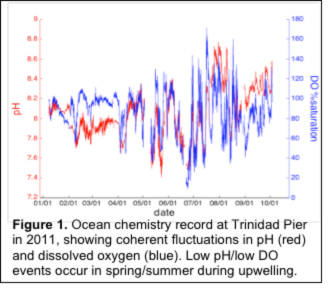
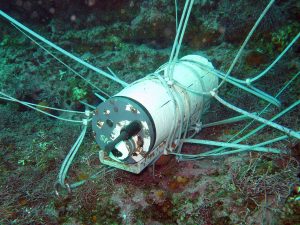
SeaFET autonomous pH and temperature sensor makes a continuous time series of ocean chemistry in Carmel Bay
Effects of OA and hypoxia on juvenile rockfish
Funding - National Science Foundation Emerging Frontiers: OA (#1416919) – Collaborative Research: Ocean Acidification: RUI: Multiple Stressor Effects of Ocean Acidification and Hypoxia on Behavior, Physiology, and Gene Expression of Temperate Reef Fishes
Funding - California Sea Grant (R/CC-07) – Effects of ocean acidification on olfactory senses, swimming physiology, and gene expression in juvenile rockfish
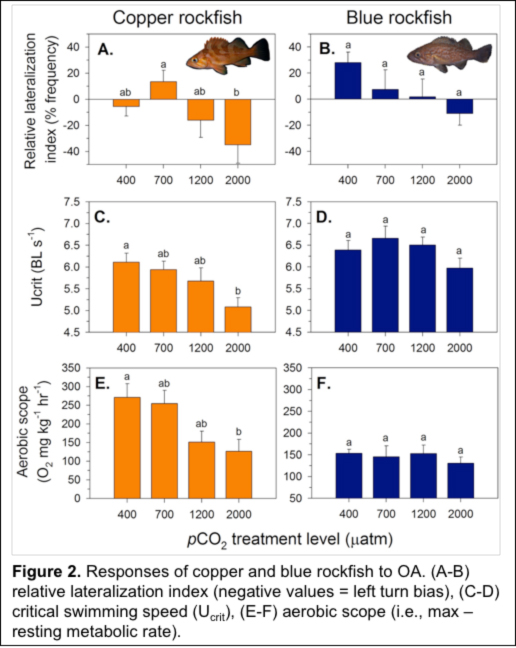
Dr. Hamilton was recently awarded an NSF grant with collaborators Susan Sogard (NOAA Southwest Fisheries Science Center), Cheryl Logan (CSU – Monterey Bay), and Eric Bjorkstedt and Brian Tissot (Humboldt State University) to study the combined effects of ocean acidification and hypoxia on the behavior, physiology, and gene expression of juvenile rockfishes. This study seeks to understand how global change can affect rockfishes at their vulnerable early post-settlement stage by studying them from the scale of genetics to the whole organism. Past research in collaboration with Susan Sogard, Cheryl Logan, and Giacomo Bernardi (UCSC) examined the effects of OA on the behavior and physiology of juvenile rockfish. This formed the Master's thesis of Will Fennie (Fig. 2).
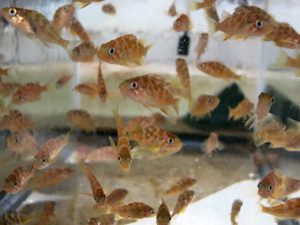
Juvenile copper rockfish collected for lab experiments
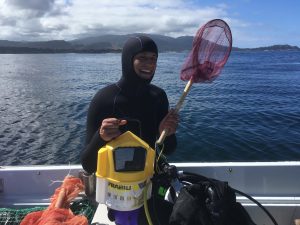
Collecting juvenile rockfish with hand nets on SCUBA at Stillwater Cove, Monterey
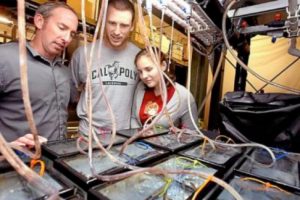
Dr. Hamilton with student Will Fennie and Aimee Braddock at the MBARI seawater facility
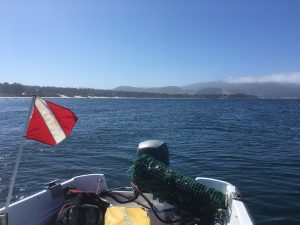
Deploying SMURFs (Submersible Marine Units for Recruitment of Fishes) to collect YOY (Young of the Year) rockfish
The major goals of the project are to evaluate the independent and interactive effects of ocean acidification (low pH or high CO2) and hypoxia (low dissolved oxygen [DO]) on the behavior, physiology, and gene expression of juvenile rockfish (genus Sebastes). More specifically, we plan to use a combination of laboratory and field studies to examine ecologically and physiologically relevant responses.
Study objectives
1. To determine the effects of decreased pH and low DO levels on olfactory capabilities, brain functional asymmetry (i.e., lateralization), and problem-solving ability (i.e., escape challenge).
2. To determine the effects of ocean acidification and hypoxia on swimming capabilities (i.e., critical swimming speeds), aerobic performance (i.e., oxygen consumption rates, gill morphology), and growth.
3. To use next generation transcriptome sequencing to examine genome-wide changes in gene expression of juvenile rockfish to ocean acidification and hypoxia (Fig. 3). We will evaluate which genes change in their expression and identify the function of those genes in relation to observed physiological and behavioral changes. We will also assay enzyme activity for Na+/K+ ATPase, citrate synthase, and lactate dehydrogenase as proxies for acid-base compensation and metabolic shifts between aerobic and anaerobic metabolism.
4. To deploy sensors to determine the frequency and intensity of hypoxia and low pH events in nearshore habitats in Northern and Central CA. We will adaptively sample juvenile rockfish to evaluate gene expression and physiological responses in field exposed individuals.
Graduate students actively working on this project include Evan Mattiasen and Melissa Palmisciano
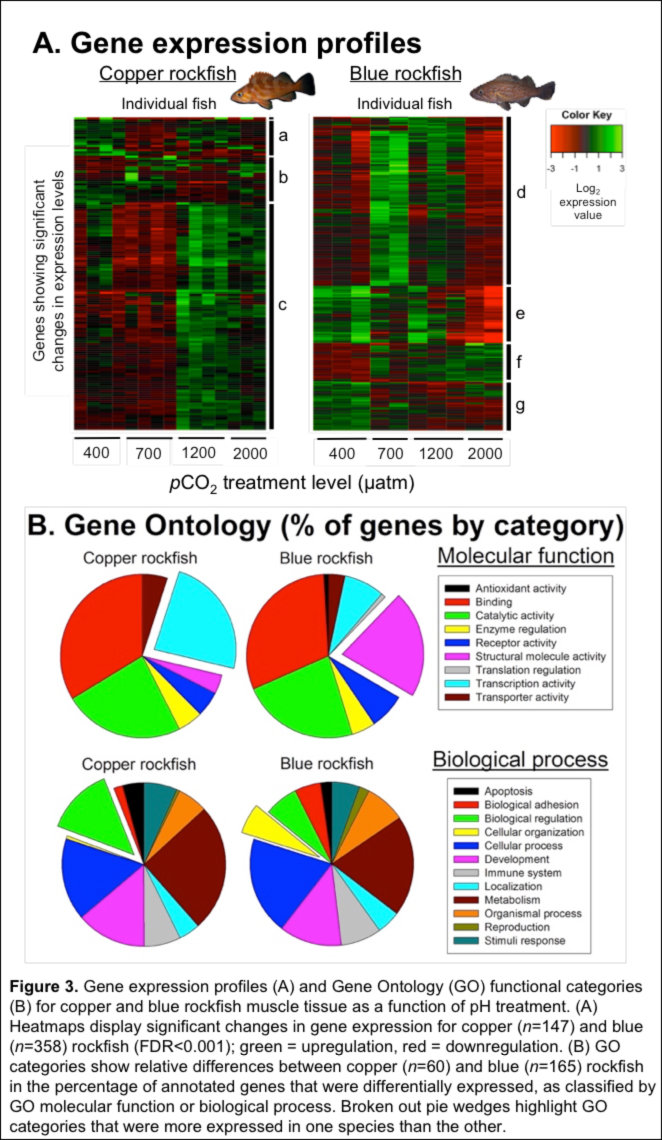
Effects of OA and hypoxia on reproduction in groundfishes
Funding - California Sea Grant (R/HCME-20B) – Effects of ocean acidification and hypoxia on reproduction in rockfish
Funding - NOAA Saltonstall-Kennedy (NA16-NMF4270255) - Forecasting the effects of ocean acidification and hypoxia on reproduction of West Coast groundfish
A new direction in the lab, in collaboration with Susan Sogard (NOAA SWFSC), Cheryl Logan (CSUMNB), and Giacomo Bernardi (UCSC), is to investigate the effects of multiple stressors related to climate change on reproduction, embryo development, and larval performance of multiple species of West Coast groundfishes. We are investigating the effects of ocean acidification and hypoxia on species that differ in their reproductive strategies, including rockfishes, greenlings, and sanddabs. Rockfishes have internal fertilization and young develop inside mom, potentially buffered from external environmental conditions, until the time of parturition and larval release. In contrast, greenlings lay demersal eggs and sanddabs broadcast eggs into the water column; both strategies expose developing young directly to ambient seawater chemistry conditions.
Study objectives
1. To determine the individual and combined effects of ocean acidification and hypoxia on embryo development (Fig. 4), larval survival, and physiological performance in multiple species of groundfish with different reproductive life histories.
2. To determine patterns of gene expression and enzyme activity for multiple functional gene categories in larvae exposed to varying levels of individual and combined effects of ocean acidification and hypoxia, to better understand the mechanistic underpinnings of responses to climate change at the molecular and physiological level.
3. To forecast the likely consequences of ocean acidification and hypoxia on reproductive success, carrying capacity, productivity and the species composition of groundfish communities.
Graduate students actively working on this project include Kristin Saksa
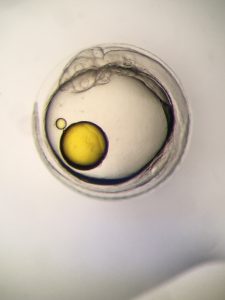
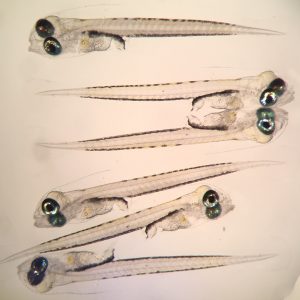
Developing gopher rockfish embryo (otolith stage) (left) and 1 day old gopher rockfish larvae (right). Photographs taken by Dave Stafford and Neosha Kashef , collaborators at SWFSC NOAA
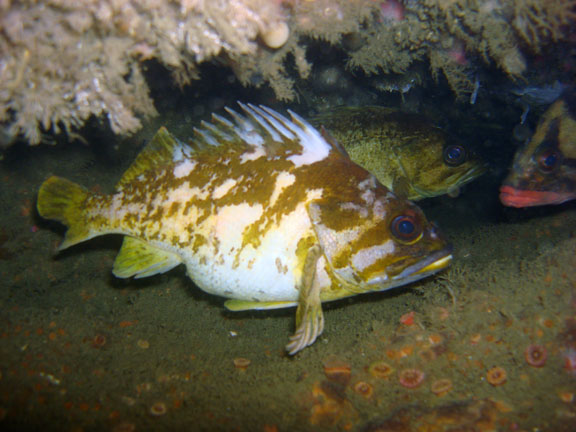
Pregnant gopher rockfish
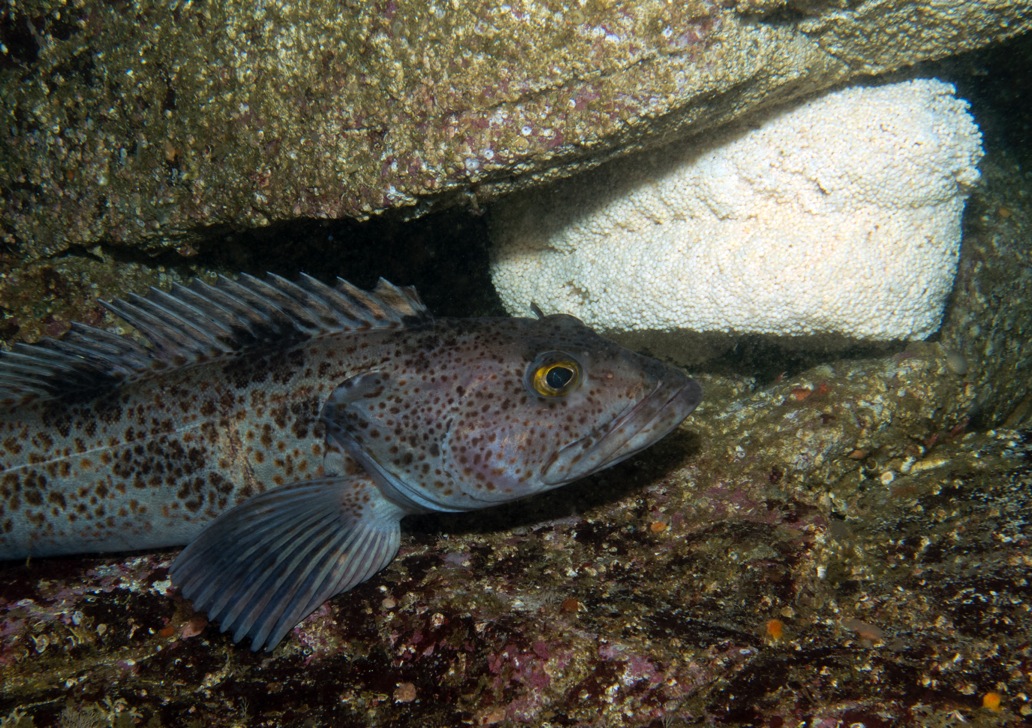
Lingcod guarding egg mass
Effects of ocean acidification on seaweeds and benthic communities in kelp forests
Funding - California Sea Grant (R/CC-05) - Response of calcified and fleshy macroalgae to warming and ocean acidification: from single species to community interactions
Past studies in collaboration with Dr. Mike Graham at MLML and Dr. Jennifer Smith and Dr. Nichole Price at the Scripps Institution of Oceanography that examined the effects of ocean acidification on benthic communities in central and southern California. When carbon dioxide increases in the atmosphere, some of it is absorbed by the ocean which alters ocean chemistry. This effect can compromise carbonate portions of marine organisms, and potentially lead to shifts in the competitive abilities of calcifying vs. non-calcifying algae in temperate kelp forests.
Master's student Emily Donham completed her thesis examining the effects of ocean acidification and warming on the physiology of coralline algae and the effects of ocean acidification and grazing on the development of benthic communities.
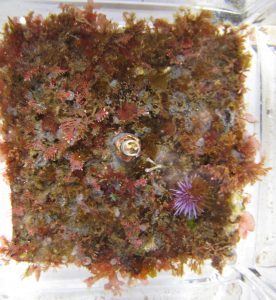
Settlement Tile
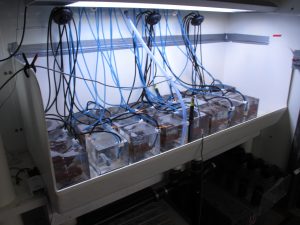
Seawater bubbling system
Study Objectives
1. To examine the independent and interactive effects of warming and ocean acidification on locally abundant species of calcified and fleshy seaweeds (including invasive species such as Undaria pinnatifida and Sargassum muticum).
2. To evaluate the effects of climate change on biodiversity, species interactions, and competitive dominance in natural benthic algal assemblages. Artificial settlement tiles will be used to acquire natural kelp understory algal assemblages in situ, which we will later expose to factorial temperature and pCO2 treatments over multiple months in the lab to measure changes in growth, competition, and ultimately community structure
3. To evaluate how ocean acidification may alter facilitation between calcified algae and invertebrate larval settlers. Specifically, we propose to measure changes in the production of settlement cues by CCA and the detection of those cues by larval red abalone across a suite of future climate change scenarios.

